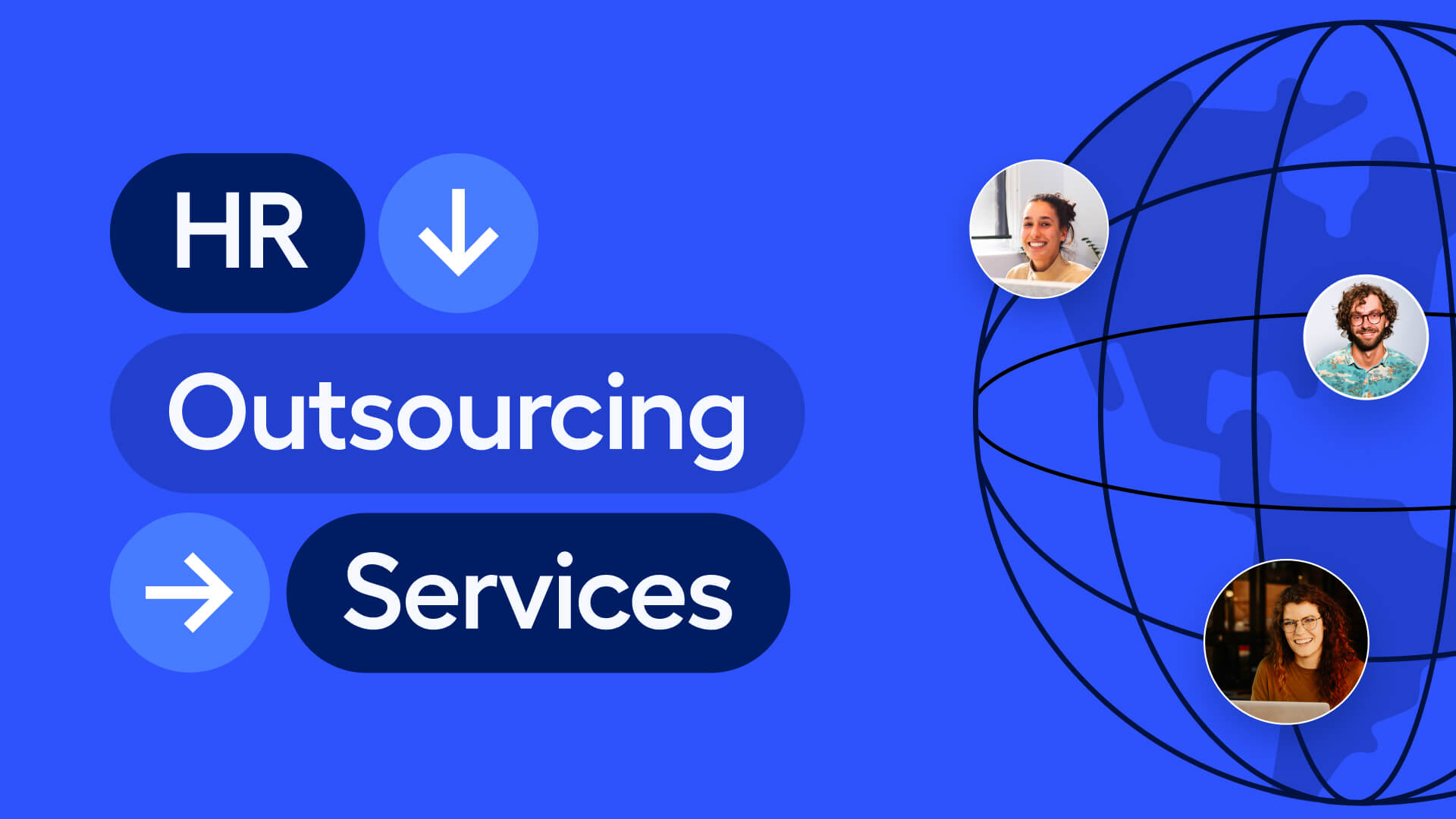Keeping pace in the shifting sands of business means looking for every available advantage—that’s where a HR Outsourcing Service comes in
Many companies suffer from what experts have called Not Invented Here syndrome. The symptoms are pretty simple—avoiding external knowledge and research, business leaders favor ideas that come from inside their own four walls. But, in the fast-paced, increasingly-globalized modern workplace, the effects for such restricted thinking can be devastating.
Resistance to obtaining valuable insight from outside the business means risking maximizing your company’s true potential. Keeping everything in-house hinders scalability and heightens the daunting possibility of resource overload, resulting in a fed-up staff who find themselves with far too much on their to-do list.
This is where outsourcing enters the picture.
Why choose a HR Outsourcing Service?
Agility is a key attribute for modern business. But the process of outsourcing comes with its concerns, often based on an outdated understanding of services offered and the myriad benefits that can come from challenging the ways of the old.
For example, a loss of control is a frequently expressed worry for those new to the space. But over-indexing on internal resources can waste energy better used elsewhere. Reduced focus, limited expertise, and steep learning curves can lead to increased time-to-market and reduced opportunities galore.
The beneficial features of a market-leading HR Outsourcing (HRO) Service are clear to see:
1. Global Compliance:
The globalization of the workplace can be laden with booby-traps and potholes, and navigating the intricacies of ever-shifting tax regulations, labor laws, and employment standards is not how you want to be spending your days. Outsourcing can help you skim over these challenges with a superior understanding of international hiring. Luckily, Multiplier’s award-winning, all-in-one platform for Global Compliance will help you reduce your legal risks and manage your all-important reputation.
2. Streamlined Onboarding:
Minimizing the time spent on administrative hassles means more time for your new hire to actually do the job you recruited them for. Recent research has found that organizations with great onboarding increase new hire retention by 82% and productivity by over 70%.
3. Customisable Benefits:
Armed with an array of tweakable offers, customisable benefits allows employers to be agile in catering to a new hire’s needs, such as the ability to issue an Employee Stock Ownership Plan (ESOP). This kind of flexibility is crucial in attracting high quality talent—some may have needs different to existing staff—while all employees will appreciate the opportunity to customize their benefits beyond their initial enrollment.
4. Always-on Support:
There’s nothing worse than a potentially anxiety-inducing question having its answers held-up by the traditions of a 9-to-5 schedule. HR dashboards with easily accessible information at any time—day or night—will mean greater clarity and communication (and precious peace of mind) for all involved.
5. Payroll Management:
Payroll errors can be a nightmare for all involved: eroding employee trust and time-consuming to rectify. An expert HRO will be meticulous in its approach to payment, ensuring staff receive their compensation with consistent precision. (Probably a good time to mention that Multiplier’s Payroll product allows businesses to pay a global team in the currency of your choice with a single click…)
6. Budget Transparency:
At-a-glance financial transparency allows for better strategic planning, resource allocation, and performance evaluation. You can kiss goodbye to hidden costs as HR services offer robust reporting features allowing for transparent pricing structures and a clearer understanding on what is being spent where.
(Best) Practice makes perfect
As with any area in the self-respecting modern business, entering into a new business relationship needs to come with a specifically outlined set of goals. If you’re thinking of dipping a toe into outsourcing your HR services, here are some best practises to bear in mind:
1. Choose the right partner:
Looking for a service with a strong track-record and in-depth case studies in an industry relevant to your business is a great place to start. Then we get into setting expectations.
2. Ask yourself why:
Instead of steaming forward with a list of demands, ask yourself why you’re doing this in the first place: Why is your business outsourcing HR? Is it to improve scalability or a cost-cutting measure? To attract top-tier global talent or offer a higher-quality experience for your current employees?
“Achieving goals becomes easier when they’re connected to a reason and purpose,” writes Allison Walsh in a recent Harvard Business Review piece.
3. Establish clearly-defined goals:
Choosing a service that keeps employees’ objectives, KPIs, and service-level agreement (SLAs) available to access at a glance will help ensure that everyone stays on-track.
4. Create clear lines of communication:
Tying yours goals to a broader, company-wide Why should lead to a more satisfying experience all-round, but be aware that HR, like any department, may not thrive on a set-it-and-forget-it approach. Clear, consistent communication is needed to be effective in achieving your goals, especially with an outsourced partner.
“In organizations, real power and energy is generated through relationships,” says legendary management consultant Margaret Wheatley. “The patterns of relationships and the capacities to form them are more important than tasks, functions, roles, and positions.”
5. Think about the long game:
While outsourcing your HRO service may provide an immediate alleviation of your company’s issues, it’s important to maintain a long-term strategy: what may suit your business today, may not be fit for purpose a year from now. Periodically evaluate the performance and impacts of your service to make sure it stays meeting your needs.
Trends in high places
We all know that keeping relevance in our accelerated culture is harder than ever, but you should be able to trust your HRO provider to have their finger on the pulse of emerging trends in the sector.
Top of the list, of course, is Artificial Intelligence (AI) and Machine Learning (ML). As we’ve said elsewhere, if you’re a business and you aren’t looking to bring some form of automation to the table, you could risk being left behind. A recent Salesforce study reported some stunning numbers: 90% of workers said automation increased their productivity, almost the same amount as said automation reduced errors in their work. The same study also found that 80% of employees felt automation provided more free time and flexibility to do their jobs, areas that definitively align with the goals of leading HROs.
Automation can help reduce some of the titanic workload on HR professionals during the global talent crunch. AI and ML can provide valuable support in areas such as candidate screening and onboarding, as well as performance evaluations, finding patterns that may impact employee productivity and turnover rates.
However, while tech advancements have helped cultivate an increasingly distributed post-Pandemic workforce, there’s a long way to go when it comes to dealing with the emotional and psychological fallout from this new world of work. According to a recent Surgeon General Report, 81% of workers have said they’re on the lookout for employers who support positive mental health strategies in the future.
As businesses have had to work harder than ever to stay afloat over a difficult few years, workplace exhaustion has become a major concern.
The State of Workplace Burnout—a 2023 report from business consultants Shift The Work and Australian workplace research non-profit Infinite Potential—announced that 38% of people surveyed are burnt out.
Individuals in the Workplace Burnout study reported high levels of exhaustion, cynicism, and reduced professional efficacy: effects which can be massively detrimental to the employer and employer, as well as the employee’s colleagues.
But as Emily and Amelia Nagoski write in their bestselling book Burnout: The Secret To Unlocking the Stress Cycle: “Stress is not bad for you; being stuck is bad for you.”
A progressive approach to mental health is essential, and HR Outsourcing Services are now expected to provide employees with access to benefits such as free access to coaches, counselors, and psychologists.
But approaching the fallout is just one piece of a puzzle that requires holistic thinking to tackle.
A flexible approach to work is not just about where you work, but when: According to a recent article in Forbes’ 2023 Future of Working and Learning Report, when the study asked “what matters most in terms of flexible work”, more knowledge workers and frontline workers selected flexibility in their working hours than their place of work.
Proven to boost productivity at work, a redefined, newly-flexible calendar creates energized employees who can ride the wave of another empowering trend: education. According to LinkedIn’s 2023 Workplace Learning Report, “skills sets for jobs have changed by around 25% since 2015. By 2027, this number is expected to double.” Another study found that over a third of the top 20 skills in job postings have changed since 2016.
Combine these with the sobering statistic from last year’s Workplace Intelligence study finding that 74% of Millennial and Gen Z employees are likely to quit within the next year due to a lack of skills development opportunities, it’s clear that personalized upskilling is no corporate luxury: it needs to be a priority in your company’s HR offering.
Conclusion
As economies begin to regain their footing, the benefits of HRO services can not just outweigh the potential challenges but ultimately improve the quality of life for employees everywhere.
“We thrive when we have a positive goal to move toward,” write the Nagoskis in Burnout, “not just a negative state we’re trying to move away from.”
Having these goals—measurable, customizable, and bang on trend—clearly-defined from onboarding for new hires and ever-accessible for current employees have been shown to increase satisfaction and productivity, as well as reducing turnover in the workplace.
When it comes to maximizing your business’ potential in the new world of work, the question is not Can you afford to integrate a HR Outsourcing Service into your business? But Can you afford not to?
Know more about our Solution.
FAQs
1. What are the latest trends in HR outsourcing?
Latest HR Outsourcing trends stress upskilling, custom benefits, improved onboarding, and expanded data access for employers and employees. AI and ML integrate NLP chatbots for global employee communication, analyzing workload, engagement data for job satisfaction, and predicting turnover.
2. Are there any risks associated with HR outsourcing?
Yes, risks include loss of control over processes affecting your values and standards. Concerns can include communication challenges, provider stability, data security, employee resistance to localized solutions.
3. How does HR outsourcing impact employee satisfaction?
HR Outsourcing can impact employee satisfaction negatively—a perception of loss of personal touch, confidentiality concerns, and job insecurity concerns—and positively—.enhanced focus on employee development, engagement, and efficiency via task outsourcing and access to data dashboards.
4. What is the typical pricing structure for HR outsourcing?
Using Multiplier, HR outsourcing for smaller businesses handling freelancer payments starts at $40/month. Larger businesses seeking comprehensive HR solutions, including instant contracts, multi-country payroll, and more, start at $400/month..







